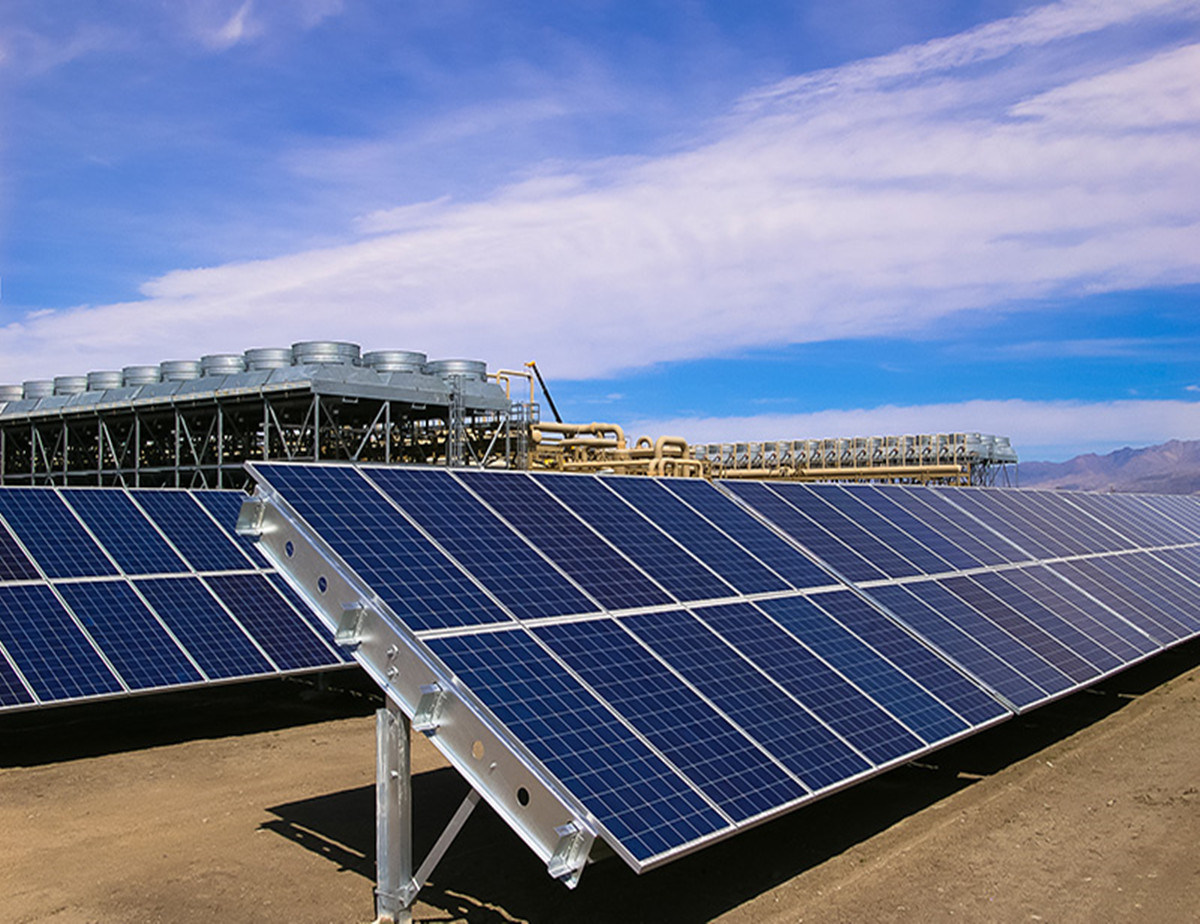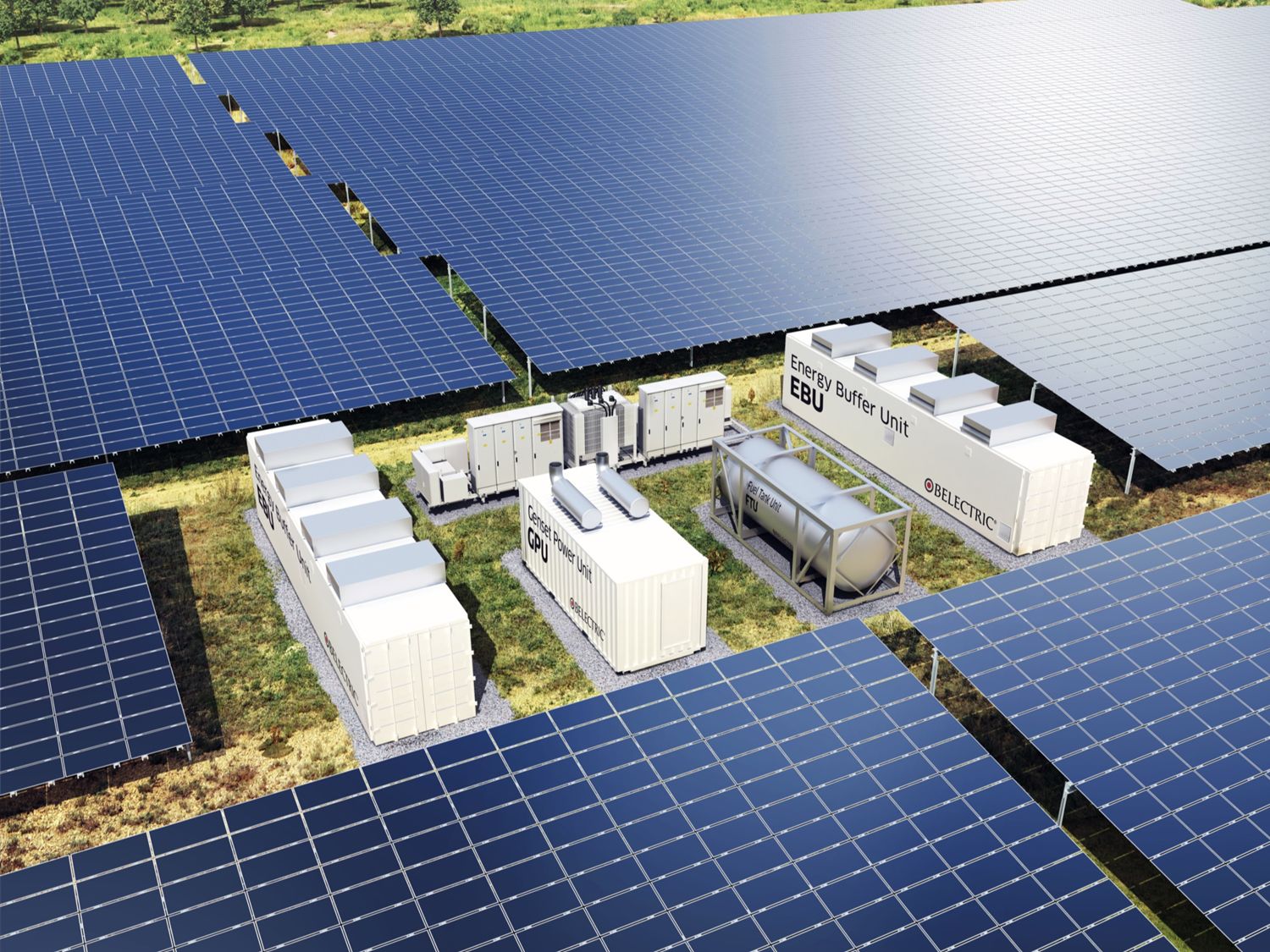The hybrid solar power plant has become a game changer in the energy industry. By combining traditional energy sources with renewable solar energy, solar power plants provide significant benefits to individuals and businesses. These are the most important advantages of solar power plants and how they transform the energy landscape. From cost savings to improved sustainability, these systems are revolutionizing how people access energy. So read on to learn more about the many benefits of solar power plants.
Cost Savings
One of the significant benefits of solar power plants is the potential for cost savings. These power plants combine solar energy with another energy source, such as wind or diesel, to create a more reliable and efficient energy system.
Solar power plants offer cost savings through reduced energy costs. Solar power is a free and abundant energy source, and by harnessing it, power plants can reduce their reliance on expensive fossil fuels. This can lead to significant savings in energy expenses over time. Additionally, using solar energy reduces the need for frequent maintenance and fuel replenishment, resulting in lower operational costs for the power plant.
Another aspect of cost savings is the ability to sell excess energy back to the grid. Solar power plants often produce more energy than they consume, especially during peak sunlight. This surplus energy can be sold to the grid, generating additional revenue for the power plant owner.
Hybrid Solar Controller Increase Energy Efficiency
One of the significant benefits of hybrid solar controller is the increase in energy efficiency, thanks to the implementation of solar controllers. These controllers are crucial in optimizing energy production and usage within the power plant.
A solar controller is a device that manages the flow of electricity between different energy sources, such as solar panels and battery storage systems. By intelligently monitoring the power output from each source and adjusting the energy flow accordingly, these controllers ensure that the power plant operates at maximum efficiency.
One of the main ways solar controllers enhance energy efficiency is by prioritizing solar energy over other energy sources. When solar power production is at its peak, the controllers direct the excess energy to charge the battery storage systems instead of relying on traditional power sources. This energy can then be used during low solar power production periods, effectively reducing reliance on non-renewable energy sources.
Reliability And Stability Of Power Supply
One of the significant benefits of solar power plants is the reliability and stability of the power supply they provide. Unlike traditional power sources, which can be affected by various external factors, solar power plants can generate electricity consistently and provide a stable power supply.
Solar power is an abundant and renewable energy source that is available during the day. By combining solar power with other sources such as wind or biomass, solar power plants can ensure a constant supply of electricity, regardless of the time of day or weather conditions. This stability is crucial, especially for industries or areas that require a continuous power supply.
Hybrid Solar Energy Kit Reduce Carbon Emissions
One of the most significant benefits of hybrid solar energy kit is their ability to reduce carbon emissions. By harnessing renewable energy sources like solar and wind, hybrid power plants can reduce our reliance on fossil fuels and cut down on harmful greenhouse gas emissions.
Solar energy kits utilize both solar panels and a backup energy source like diesel or natural gas to provide a constant and reliable source of power. This reduces the need for fossil fuels and decreases carbon emissions.
According to a study by the National Renewable Energy Laboratory, solar power plants have the potential to reduce carbon emissions by up to 50% compared to traditional power plants.
Reducing carbon emissions is essential for mitigating the impact of climate change and achieving global sustainability goals. Solar power plants are a crucial step towards achieving a cleaner, more sustainable energy future.
Combining Renewable Energy Sources
Solar power plants combine renewable energy sources such as solar and wind power to maximize energy output. This is achieved through a solar controller, which ensures that the energy produced by each source is properly distributed and stored for later use.
By combining different renewable energy sources, solar power plants can overcome the intermittency of each source and create a more reliable and stable energy supply. For instance, when the sun is not shining, wind turbines can continue to generate energy. Similarly, on calm days when the wind is not blowing, solar panels can take over.
Moreover, solar power plants are open to more than just solar and wind energy. Other renewable energy sources, such as biomass and hydropower, can also be integrated into the system. This enhances the flexibility and scalability of the energy generation system.
Solar Hybrid Power Systems Enhance Grid Stability And Integration
One of the significant benefits of solar hybrid power systems is their ability to enhance grid stability and integration. Traditional power grids often struggle to handle fluctuations in energy supply and demand, leading to instability and blackouts. However, hybrid solar power systems can help stabilize the grid by integrating renewable energy sources with traditional fossil fuel-based power plants.
The combination of solar energy with other sources, such as natural gas or diesel generators, allows for a more reliable and consistent power supply. During periods of high demand or low solar availability, the hybrid system can seamlessly switch to the backup power source, ensuring an uninterrupted electricity supply. This capability not only enhances the stability of the grid but also reduces the risk of power outages and disruptions.
Job Creation And Economic Growth
One significant benefit of solar power plants is the potential for job creation and economic growth. As the demand for renewable energy continues to rise, the installation, maintenance, and operation of these plants create employment opportunities across various sectors.
Firstly, the construction phase of a solar power plant requires a significant workforce. This includes skilled workers such as engineers, technicians, and project managers, as well as laborers and support staff. These jobs not only contribute to local employment rates but also stimulate economic activity in the form of increased spending on goods and services in the surrounding communities.
Once the plant is operational, ongoing maintenance and monitoring are necessary. This creates a demand for jobs in areas such as equipment inspection, cleaning, and repair. Furthermore, the integration of solar power plants into the grid requires professionals with expertise in energy management and grid integration.
Scalability And Flexibility
One of the significant benefits of solar power plants is their scalability and flexibility. Unlike traditional power plants that rely on finite resources, solar power plants can be easily expanded to meet growing energy demands. This scalability is crucial in today’s fast-growing world, where the need for energy is constantly increasing.
Additionally, solar power plants offer flexibility in terms of location. They can be installed in various areas, such as rooftops, open fields, or even offshore. This flexibility allows for better utilization of available space and enables the integration of solar power in diverse landscapes.
Moreover, solar power plants can easily be combined with other renewable energy sources, such as wind or hydropower, to create a hybrid system that maximizes energy generation and reliability. This flexibility ensures a more stable and sustainable power supply, even in fluctuating weather conditions.
Hybrid Solar Lighting System Improves Energy Access In Remote Areas
One of the most significant benefits of hybrid solar lighting system is their ability to improve energy access in remote areas through the use of solar lighting systems. In many parts of the world, especially in rural and remote areas, there is limited or no access to electricity. This lack of access hinders development and severely impacts the quality of life for millions of people.
Solar lighting systems offer a solution to this problem by harnessing the power of the sun to provide lighting in remote areas. These systems consist of solar panels, batteries, and LED lights, which are installed in locations where electricity from the grid is not available. The solar panels capture sunlight during the day and convert it into electricity, which is stored in the batteries. At night, the reserved energy powers the LED lights, providing reliable and clean lighting.
Conclusion
In conclusion, solar power plants are revolutionizing the energy landscape by providing numerous benefits. They offer cost savings by maximizing energy efficiency and reducing operational expenses. With the integration of renewable energy sources, these power plants reduce carbon emissions and contribute to a more sustainable future.
Additionally, solar power plants enhance the stability and reliability of the power supply, ensuring uninterrupted electricity for industries, homes, and communities. They also improve grid stability and integration, supporting the overall efficiency and reliability of the electrical system.
Furthermore, these power plants create job opportunities and drive economic growth. The installation, maintenance, and operation of solar power plants require a skilled workforce, contributing to local employment and stimulating the economy.
Scalability and flexibility are other advantages of solar power plants. They can be customized and expanded to meet varying energy demands, making them suitable for both large-scale and small-scale applications.
| Other Good Articles to Read |
| Blogs-Nation |
| Blogs-Peoples |
| Bryan Smith Blogs |
| Intellect Blogs |
| The Fault In Our Blogs |
| Blogs Eu |
| Oz Forums |
| Recruitment Blogs |
| Zet Blogs |
| Id Blogs |
| Blogs Tudiolegale |
| Blogs Map |



